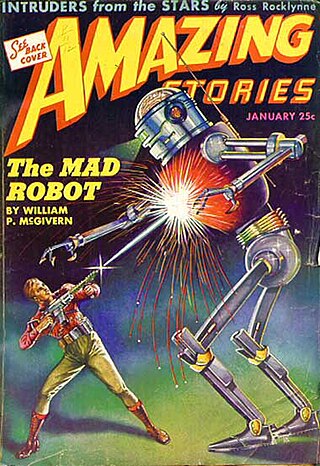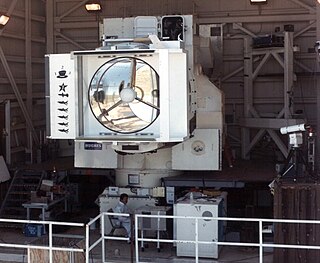
Non-lethal weapons, also called nonlethal weapons, less-lethal weapons, less-than-lethal weapons, non-deadly weapons, compliance weapons, or pain-inducing weapons are weapons intended to be less likely to kill a living target than conventional weapons such as knives and firearms with live ammunition. It is often understood that unintended or incidental casualties are risked wherever force is applied, however non-lethal weapons minimise the risk of casualties as much as possible. Non-lethal weapons are used in policing and combat situations to limit the escalation of conflict where employment of lethal force is prohibited or undesirable, where rules of engagement require minimum casualties, or where policy restricts the use of conventional force. However, these weapons occasionally cause serious injuries or death due to allergic reactions, improper use and/or other factors; for this reason the term "less-lethal" has been preferred by some organizations as it describes the risks of death more accurately than the term "non-lethal", which some have argued is a misnomer.

Strange and exotic weapons are a recurring feature in science fiction. In some cases, weapons first introduced in science fiction have been made a reality; other science-fiction weapons remain purely fictional, and are often beyond the realms of known physical possibility.

A directed-energy weapon (DEW) is a ranged weapon that damages its target with highly focused energy without a solid projectile, including lasers, microwaves, particle beams, and sound beams. Potential applications of this technology include weapons that target personnel, missiles, vehicles, and optical devices.

MIRACL, or Mid-Infrared Advanced Chemical Laser, is a directed energy weapon developed by the US Navy. It is a deuterium fluoride laser, a type of chemical laser.

Kirtland Air Force Base is a United States Air Force base. It is located in the southeast quadrant of the Albuquerque, New Mexico, urban area, adjacent to the Albuquerque International Sunport. The base was named for the early Army aviator Col. Roy C. Kirtland. The military and the international airport share the same runways, making ABQ a joint civil-military airport.

The Air Force Research Laboratory (AFRL) is a scientific research and development detachment of the United States Air Force Materiel Command dedicated to leading the discovery, development, and integration of direct-energy based aerospace warfighting technologies, planning and executing the Air Force science and technology program, and providing warfighting capabilities to United States air, space, and cyberspace forces. It controls the entire Air Force science and technology research budget which was $2.4 billion in 2006.
The Active Denial System (ADS) is a non-lethal directed-energy weapon developed by the U.S. military, designed for area denial, perimeter security and crowd control. Informally, the weapon is also called the heat ray since it works by heating the surface of targets, such as the skin of targeted human beings. Raytheon had marketed a reduced-range version of this technology. The ADS was deployed in 2010 with the United States military in the Afghanistan War, but was withdrawn without seeing combat. On August 20, 2010, the Los Angeles Sheriff's Department announced its intent to use this technology to control incarcerated people in the Pitchess Detention Center in Los Angeles, stating its intent to use it in "operational evaluation" in situations such as breaking up prisoner fights. As of 2014, the ADS was only a vehicle-mounted weapon, though U.S. Marines and police were both working on portable versions. ADS was developed under the sponsorship of the Department of Defense Non-Lethal Weapons Program with the Air Force Research Laboratory as the lead agency. There are reports that Russia and China are developing their own versions of the Active Denial System.

The Air Force Materiel Command (AFMC) is a Major Command (MAJCOM) of the United States Air Force (USAF). AFMC was created on July 1, 1992, through the amalgamation of the former Air Force Logistics Command (AFLC) and the former Air Force Systems Command (AFSC).

The Advanced Tactical Laser (ATL) program was a US military program to mount a high energy laser weapon on an aircraft, initially the AC-130 gunship, for use against ground targets in urban or other areas where minimizing collateral damage is important. The laser was a 100 kilowatt-class chemical oxygen iodine laser (COIL). It was expected to have a tactical range of approximately twenty kilometres and weigh about 5,000–7,000 kg. This program is distinct from the Airborne Laser, which was a much larger system designed to destroy enemy missiles in the boost phase.

The United Nations Convention on Certain Conventional Weapons, concluded at Geneva on October 10, 1980, and entered into force in December 1983, seeks to prohibit or restrict the use of certain conventional weapons which are considered excessively injurious or whose effects are indiscriminate. The full title is Convention on Prohibitions or Restrictions on the Use of Certain Conventional Weapons Which May Be Deemed to Be Excessively Injurious or to Have Indiscriminate Effects. The convention covers land mines, booby traps, incendiary devices, blinding laser weapons and clearance of explosive remnants of war.

A dazzler is a non-lethal weapon which uses intense directed radiation to temporarily disorient its target with flash blindness. They can effectively deter further advances, regardless of language or cultural barriers, but can also be used for hailing and warning. Targets can include electronic sensors as well as human vision.

A laser weapon is a type of directed-energy weapon that uses lasers to inflict damage. Whether they will be deployed as practical, high-performance military weapons remains to be seen. One of the major issues with laser weapons is atmospheric thermal blooming, which is still largely unsolved. This issue is exacerbated when there is fog, smoke, dust, rain, snow, smog, foam, or purposely dispersed obscurant chemicals present. In essence, a laser generates a beam of light that requires clear air or a vacuum to operate.
The ZM-87 Portable Laser Disturber is a Chinese electro-optic countermeasure neodymium laser device. The ZM-87 was primarily intended to blind humans but was also reported to damage the photo-electric elements in laser rangefinders, videocameras and missile seekers. Roughly 22 of the devices were produced by the company Norinco before production ceased in 2000 as a result of the 1995 United Nations Protocol on Blinding Laser Weapons ban.

The Air Force Nuclear Weapons Center (AFNWC) is a USAF Named Unit, assigned to the Air Force Materiel Command at Kirtland Air Force Base, New Mexico. The AFNWC operates at the Center level of the AFMC. It is currently under the command of Major General John P. Newberry.
North Oscura Peak, is a summit in the Oscura Mountains in Socorro County, New Mexico is the location of an Air Force Research Laboratory (AFRL) site in the northern portion of the White Sands Missile Range. It rises to an elevation of 7,976 feet.
List of abbreviations, acronyms and initials related to military subjects such as modern armour, artillery, infantry, and weapons, along with their definitions.
The White Sands Test Center (WSTC) is responsible for planning and conducting tests at White Sands Missile Range (WSMR), New Mexico, USA. WSTC reports to the United States Army Test and Evaluation Command (ATEC). WSMR is designated as an activity within the Department of Defense (DoD) Major Range and Test Facility Base (MRTFB), a core set of DoD Test and Evaluation (T&E) infrastructure and workforce preserved as a national asset to support the DoD acquisition system. The Range possesses capabilities and infrastructure utilized by the US Army, Navy, Air Force and other government agencies as well as universities, private industry, and foreign militaries. As a tri-service facility, WSTC supports the Army by providing data collection and analysis, instrumentation development, modeling and simulation, research assessment, and technical services.
New physical principles weapons are a wide range of weapons or systems created using emerging technologies, like wave, psychophysical, and genetic weapons.












